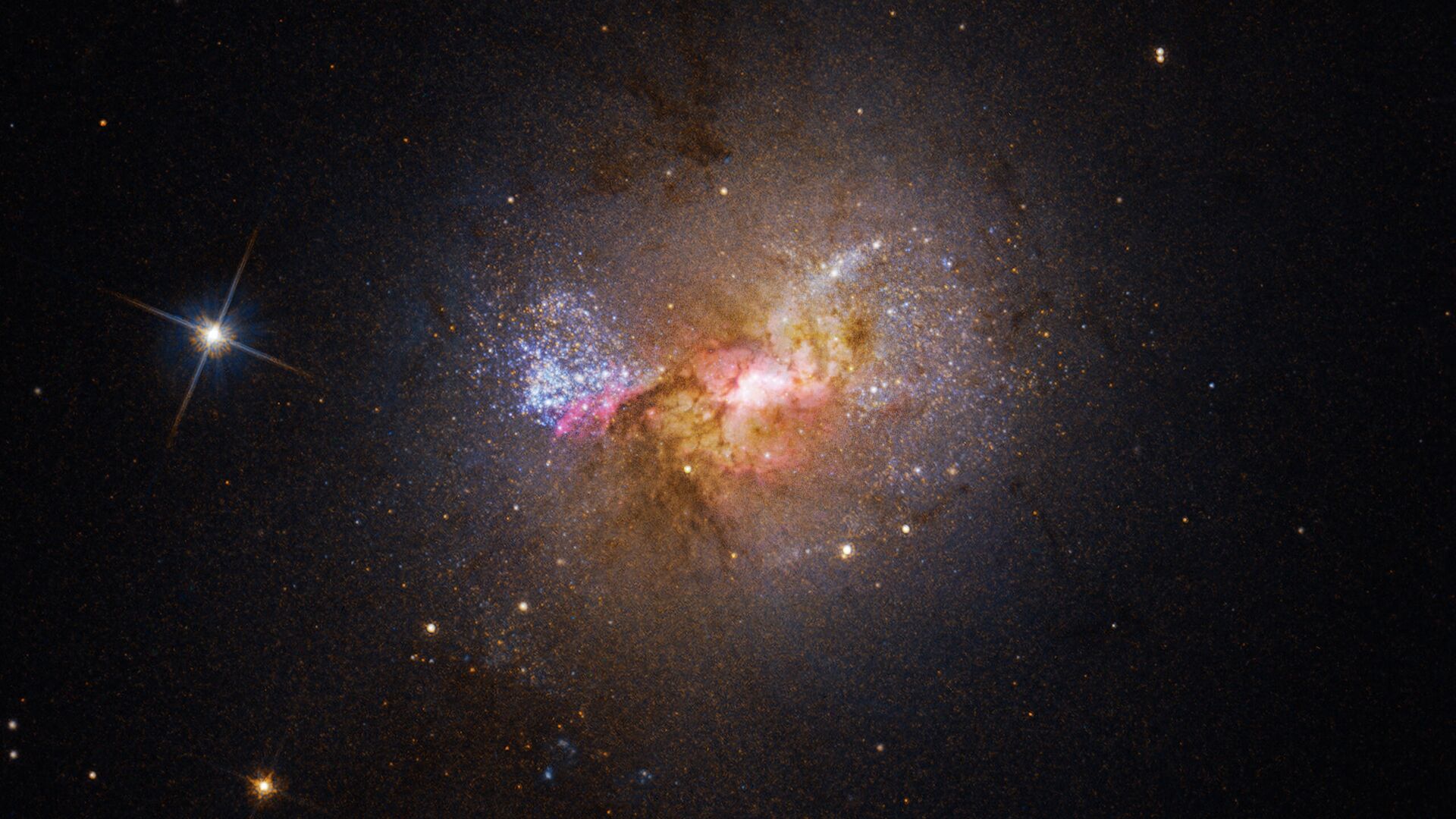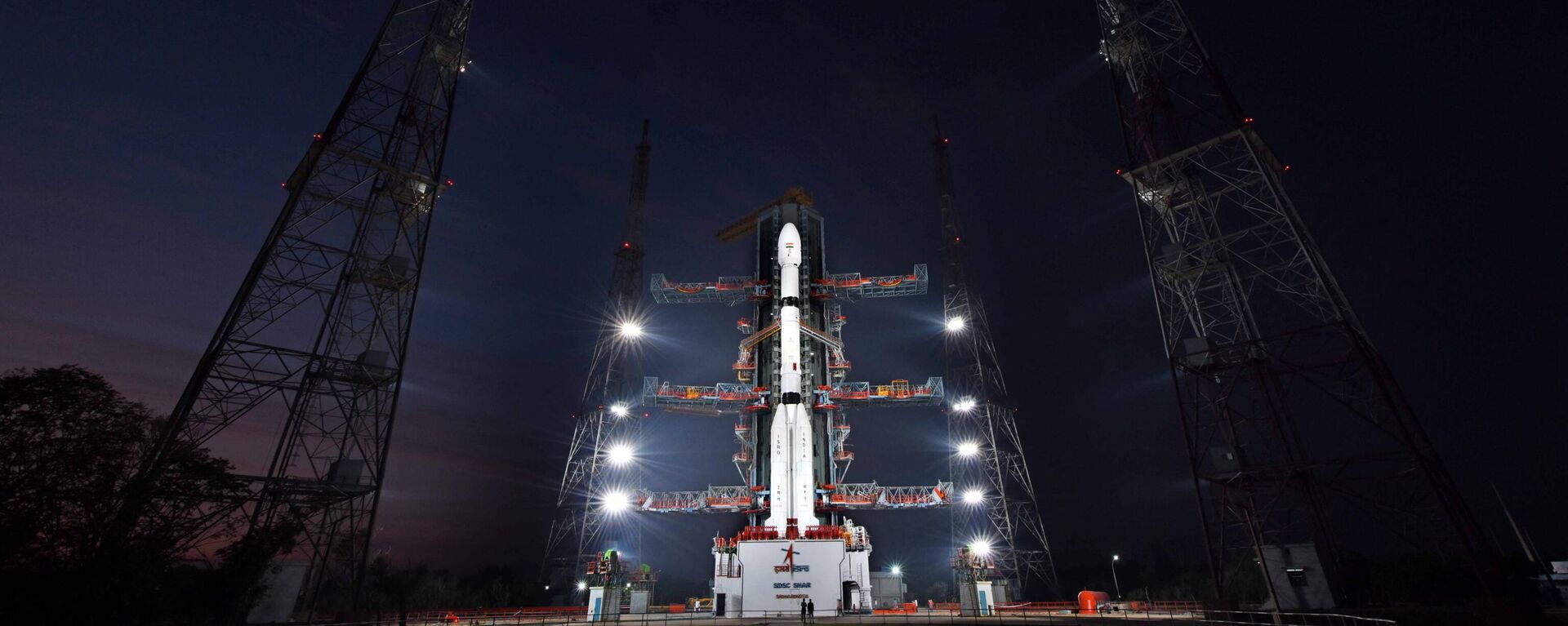https://sputniknews.in/20240221/isro-study-sheds-light-on-mysterious-black-hole-x-ray-binary-maxi-j1820070-6625481.html
ISRO Study Sheds Light on Mysterious Black Hole X-ray Binary, MAXI J1820+070
ISRO Study Sheds Light on Mysterious Black Hole X-ray Binary, MAXI J1820+070
Sputnik India
India's first space observatory, AstroSat, has enabled a group of scientists to unravel the mysterious nature of the X-ray binary system MAXI J1820+070, according to the Indian Space Research Organisation (ISRO).
2024-02-21T14:47+0530
2024-02-21T14:47+0530
2024-02-21T14:47+0530
science & tech
science & tech
india
international space station (iss)
indian space research organisation (isro)
space satellite
space industry
space exploration
space rocket
https://cdn1.img.sputniknews.in/img/07e7/0b/10/5438677_0:305:2561:1745_1920x0_80_0_0_ed4f6a083a44588cb7c528b0a0922a11.jpg
India's first space observatory, AstroSat, has enabled a group of scientists to unravel the mysterious nature of the X-ray binary system MAXI J1820+070, according to the Indian Space Research Organisation (ISRO).MAXI J1820+070, located about 9800 light-years from Earth, is a transient black hole X-ray binary.The study, "A Multi-Wavelength Spectral Study of MAXI J1820+070 in the Soft and Hard States", provides valuable insights into the behaviour of this transient black hole X-ray binary during its 2018 outburst.MAXI J1820+070 was initially discovered during its 2018 outburst using the MAXI instrument on the International Space Station (ISS). "MAXI J1820+070 grabbed the attention of the astronomy community owing to its proximity to Earth and its remarkable brightness, making it the second-brightest object in the X-ray sky upon its initial discovery," stated ISRO.This prompted numerous observing campaigns across various electromagnetic bands.The deceased star, classified as a low-mass X-ray binary, features a black hole as its central compact object. "It is often regarded as an astronomical anomaly, classified as a low-mass X-ray binary with a black hole as its central compact object," noted ISRO.The study unveiled crucial information regarding the rotational behaviour of the black hole, providing valuable insights into the fundamental properties of black hole X-ray binaries."The study establishes a compelling link between X-ray emission from the inner regions near the black hole and optical/UV emission from the outer region of the accretion disk. Reprocessed radiation in the outer accretion disk emerges as a primary mechanism for generating optical/UV photons, with a notably higher proportion observed during the hard state," the statement further elucidated.
https://sputniknews.in/20240217/isro-launches-insat-3ds-to-enhance-oceanic-observation-6586207.html
india
international space station (iss)
Sputnik India
feedback.hindi@sputniknews.com
+74956456601
MIA „Rossiya Segodnya“
2024
Deexa Khanduri
https://cdn1.img.sputniknews.in/img/07e6/0c/13/138923_52:0:533:481_100x100_80_0_0_cadf23d341691fc65ff2b22fd1afe584.jpg
Deexa Khanduri
https://cdn1.img.sputniknews.in/img/07e6/0c/13/138923_52:0:533:481_100x100_80_0_0_cadf23d341691fc65ff2b22fd1afe584.jpg
News
en_IN
Sputnik India
feedback.hindi@sputniknews.com
+74956456601
MIA „Rossiya Segodnya“
Sputnik India
feedback.hindi@sputniknews.com
+74956456601
MIA „Rossiya Segodnya“
Deexa Khanduri
https://cdn1.img.sputniknews.in/img/07e6/0c/13/138923_52:0:533:481_100x100_80_0_0_cadf23d341691fc65ff2b22fd1afe584.jpg
astrosat, space telescope, uv telescope, binary star systems, neutron stars, black holes, astrosat, mysterious essence of the x-ray binary system, maxi j1820+070,
astrosat, space telescope, uv telescope, binary star systems, neutron stars, black holes, astrosat, mysterious essence of the x-ray binary system, maxi j1820+070,
ISRO Study Sheds Light on Mysterious Black Hole X-ray Binary, MAXI J1820+070
Deexa Khanduri
Sputnik correspondent
ASTROSAT, India's multi-wavelength space telescope, was launched in September 2015 with three payloads and a UV telescope. The mission aims to understand the high-energy processes in binary systems of neutron stars and black holes.
India's first space observatory, AstroSat, has enabled a group of scientists to unravel the mysterious nature of the X-ray binary system MAXI J1820+070, according to the Indian Space Research Organisation (ISRO).
MAXI J1820+070, located about 9800 light-years from Earth, is a transient black hole X-ray binary.
The study, "A Multi-Wavelength Spectral Study of MAXI J1820+070 in the Soft and Hard States", provides valuable insights into the behaviour of this transient black hole X-ray binary during its 2018 outburst.
MAXI J1820+070 was initially discovered during its 2018 outburst using the MAXI instrument on
the International Space Station (ISS).
"MAXI J1820+070 grabbed the attention of the astronomy community owing to its proximity to Earth and its remarkable brightness, making it the second-brightest object in the X-ray sky upon its initial discovery," stated ISRO.
This prompted numerous observing campaigns across various electromagnetic bands.
The deceased star, classified as a low-mass X-ray binary, features a black hole as its central compact object. "It is often regarded as an astronomical anomaly, classified as a low-mass X-ray binary with a black hole as its central compact object," noted ISRO.
The study unveiled crucial information regarding the rotational behaviour of the black hole, providing valuable insights into the fundamental properties of black hole X-ray binaries.
"The study establishes a compelling link between X-ray emission from the inner regions near the black hole and optical/UV emission from the outer region of the accretion disk. Reprocessed radiation in the outer accretion disk emerges as a primary mechanism for generating optical/UV photons, with a notably higher proportion observed during the hard state," the statement further elucidated.



